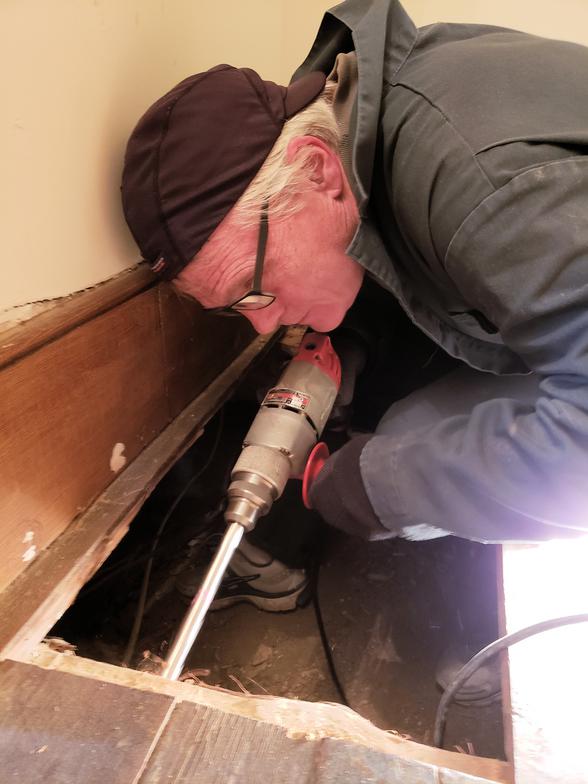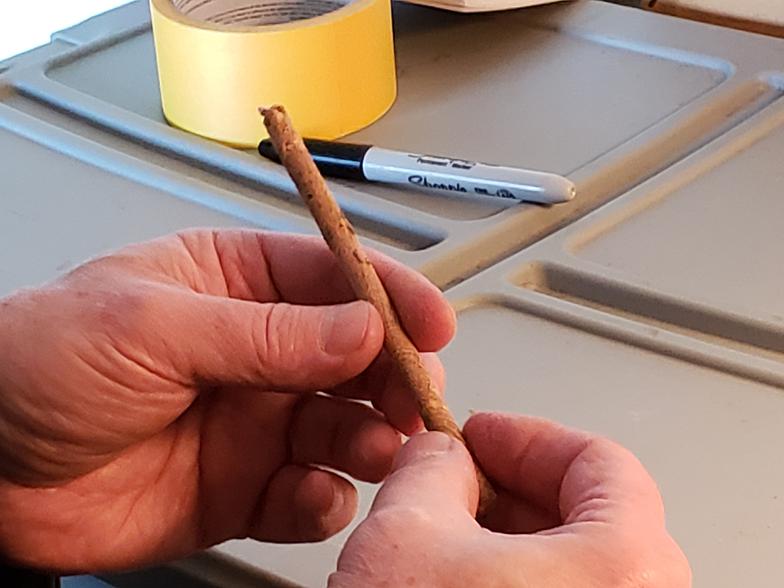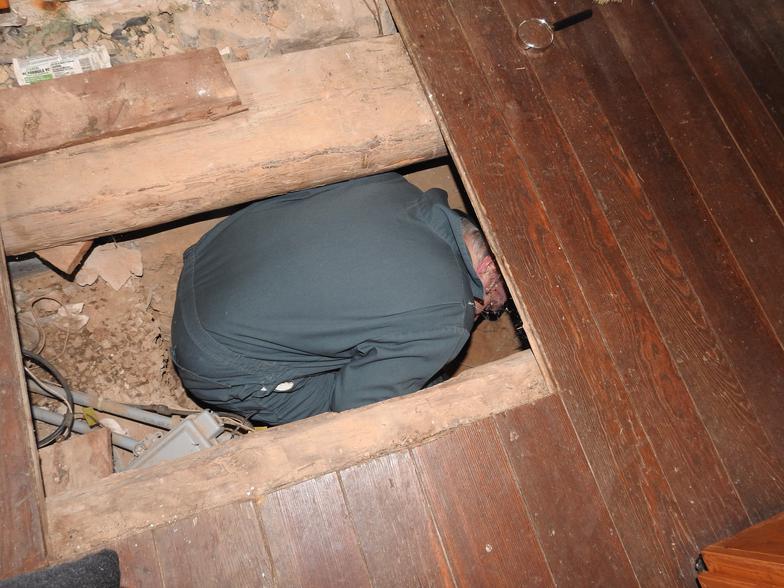2019 Dendrochronology Study
The Board of Directors, Fort Harrison, Inc. is pleased to announce the results of a dendrochronology (tree ring analysis) study which was carried out in February, 2019.
Oak beams tested in the original building foundation and attic area indicate the trees used in construction were felled in the dormant winter season between November, 1748 and March, 1749. In keeping with historical woodworking and carpentry norms of the 18th century, these timbers were likely used very soon after cutting.
The oldest beam used in the study was from a tree which began growing in 1626 while several others were also growing in the mid to late 1600's.
In addition, although not of sufficient quality to provide definitive evidence of a single cutting year, samples taken from pine support timbers under the floorboards of the newer brick portion of the house indicate that this section was most likely built and completed between 1840 and 1845.
The core samples and their measurements will be archived at the Tree Ring Laboratory, Lamont-Doherty Earth Observatory, Columbia University where the Fort Harrison materials will be available to researchers for future scientific and historical studies.
The analysis was conducted by dendrochronology consultants Dr. Edward Cook and William Callahan. Funding for the project was provided by an anonymous donor and supporter of Fort Harrison.
This has been an exciting learning experience for Fort Harrison, as we continue to learn about and preserve this fine old stone house, one of the earliest structures in the Shenandoah Valley.
Why 1749?
In the past, Fort Harrison has based the date of 1749 on a mention in the Augusta County Deed Book No. 2, where
the following notation is stated:
"Daniel Harrison, Gent. to Arthur Johnston, 190 acres; 10 acres; Cook's Creek (Harrison's stonehouse)".
Deed Book No. 2 is dated 1749. The dendrochronology study confirms the date in the Deed Book, which indicates that Capt. Harrison had a stone house by the year 1749.
From Our Expert Dendrochronologist:
Dendrochronology as a term comes from the Greek: dendron meaning "tree limb" and khronos meaning "time", and it is the science of analyzing and dating annual growth rings in trees. The science works because trees produces new wood material in response to prevailing growth conditions, good conditions resulting in good growth and poor conditions resulting in poor growth. In most tree species and most regions of the world growth begins early in the spring and ends completely in the autumn. During the dormant winter period no growth occurs, resulting in a ring "border" between no-growth winter and new-growth spring.
Collectively, rings reflect unique conditions over time (the pattern of growth of many year, for example, good-good-bad-bad-bad-good-bad-good-good and so forth), and it is possible to compare growth patterns of a sample with a compiled pattern representing local conditions over time, and thereby"crossdate" the sample by matching the ring patterns. This complied reference, a so-called "master chronology" must be constructed in advance, often beginning with live trees and lengthened back in time by adding older materials. In this way the master chronology is "anchored" in a calendar year, and thus each ring back in time represents a specific, identifiable year. For some regions and species there are master chronologies that stretch uninterrupted from the present day back more than 10,000 years.
In practice, samples are extracted from timbers by coring or cutting the growth patterns on the samples are revealed in the laboratory by measuring the widths of the growth rings, and then the pattern is compared to the master chronology. A sufficiently long growth pattern is a unique combination of bigger and smaller rings, and when compared to the master this sample pattern will fit at only one place in time. In this way historic structures can be dated, recreations of temperature or precipitation can be established or historic events can be correlated with climatic variations, etc.
William Callahan
Dendrochronologist


